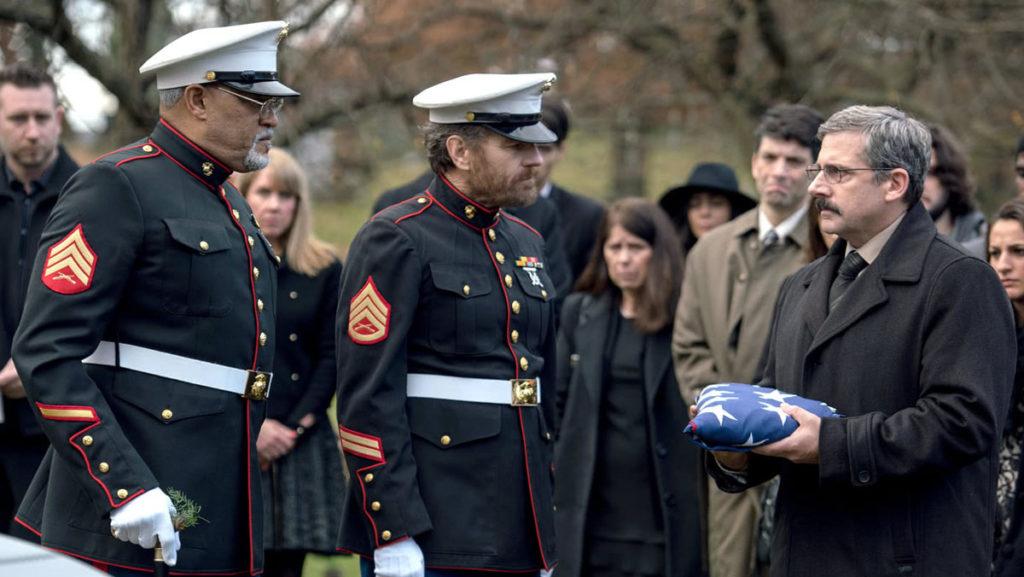“Last Flag Flying” is a war story without a single battle scene. Director Richard Linklater has done a remarkable job developing an intimate connection between the audience and the three main characters. The performances and direction make the film work as a message about the deep–seated grief that comes from war and never goes away.
The plot of “Last Flag Flying” centers on three Vietnam war veterans who have not seen each other in decades. The plot revolves around Larry Shepherd (Steve Carell) and the immense hardship he’s dealt with since he last saw his fellow veterans Sal Nealson (Bryan Cranston) and Reverend Richard Mueller (Laurence Fishburne). The journey the three go on is a road trip in which the three men reignite their friendship despite their long separation.
Regardless of how you might feel about Linklater’s films, he has an undeniably identifiable style. Linklater’s films feel voyeuristic and allow the audience to connect with the characters as they live their lives.
“Last Flag Flying” has a minimalist score that reinforces the sense of voyeurism by making the film feel more like a documentary than a drama. This means a tremendous amount of responsibility lies upon the three lead actors, who all give electric performances that convey a wide range of emotions.
Linklater’s film is part of the continuing trend in Hollywood that sees characters simply living their lives, similar to films such as “Manchester by the Sea” or “Paterson.” This is a style that lends itself to a sense of hyper-realism while still showing the characters in moments of levity.
Despite the strength of the performances, there are moments where it feels like good acting is all the movie has to offer. While all three men work together to supplement one another’s performances, it’s Cranston who steals the movie. Cranston is typically cast as a straight man, so seeing him in such a jovial role is refreshing. Sal clearly bears much of the burden that weighs on the three from their days in Vietnam, and it has manifested itself in him becoming a single, alcoholic dive-bar owner. Fishburne plays the opposite role, having seen his acts of violence and lack of chastity in Vietnam as a sin and becoming a reverend in light of his mistakes. These two characters play the role of Larry’s conscious. In one scene, Sal and Richard are shown standing behind each of his shoulders offering different advice, much like the angel and devil often seen in cartoons.
The best example of the strength of the performances is when the characters draw upon their past experiences together, expanding on each of their backgrounds. The strongest scene of the film has the three men telling a story about the first time they brought Larry to a whorehouse, and it is gut-bustingly hilarious. This relationship between the three is what makes the film feel so real and makes it so intriguing to watch.
Although the acting and writing are strong in “Last Flag Flying,” the overall pace of the film becomes problematic towards the end. In the beginning of the third act, the characters miss their train and encounter a couple more hazards that don’t seem to serve any real purpose. This whole part of the film is quite slow and meandering. In the very end, however, it does recover and ends with a strong emotional punch.
“Last Flag Flying” is an intense ride from near–tears to pure hilarity. With jaw-dropping performances, the film successfully displays the way war can stick with people throughout their lives. Despite that, the film feels too reliant on its actors at times and falters towards the end. Overall, the film succeeds in many ways but fails in a few others — still a very good watch.




















